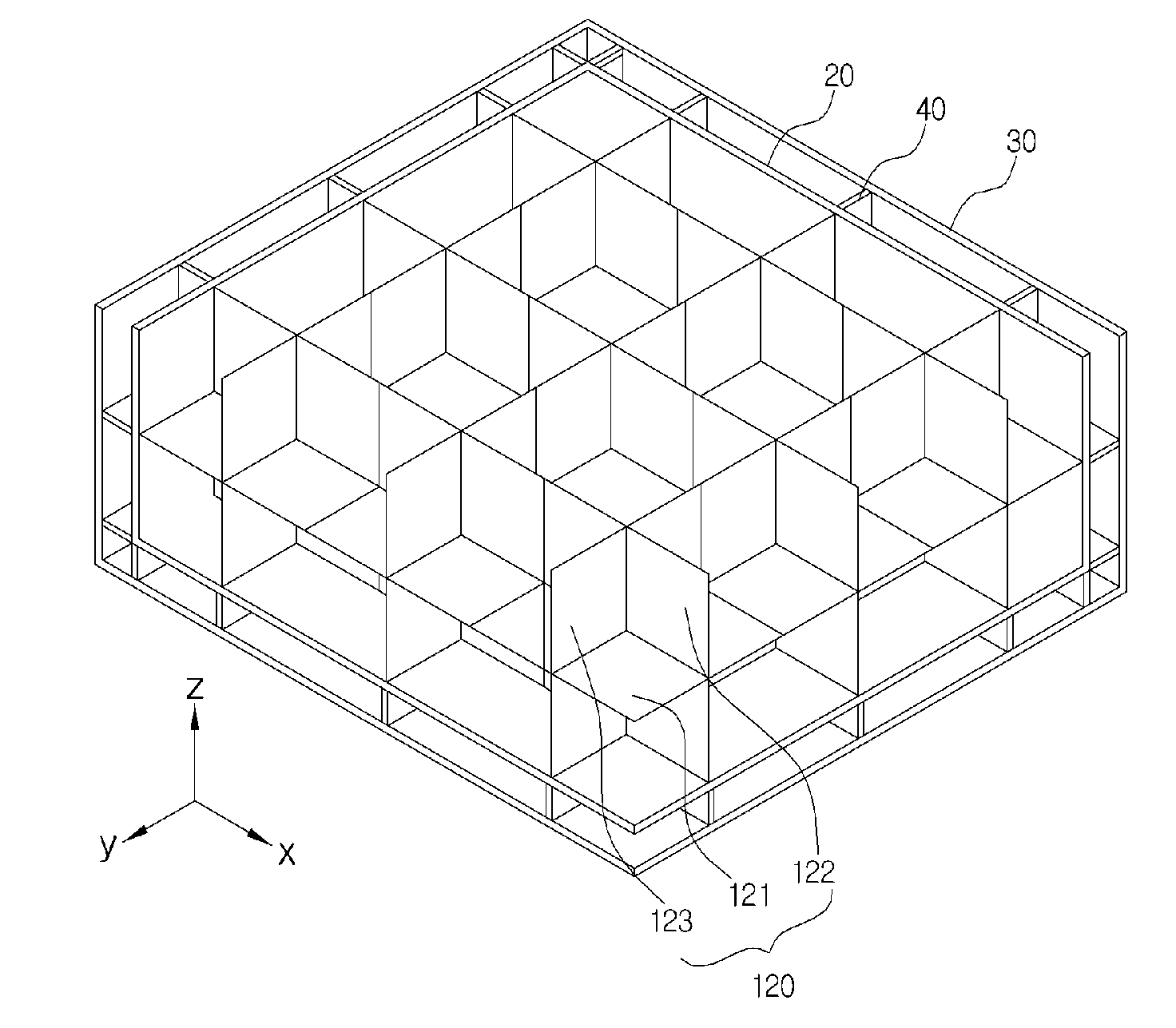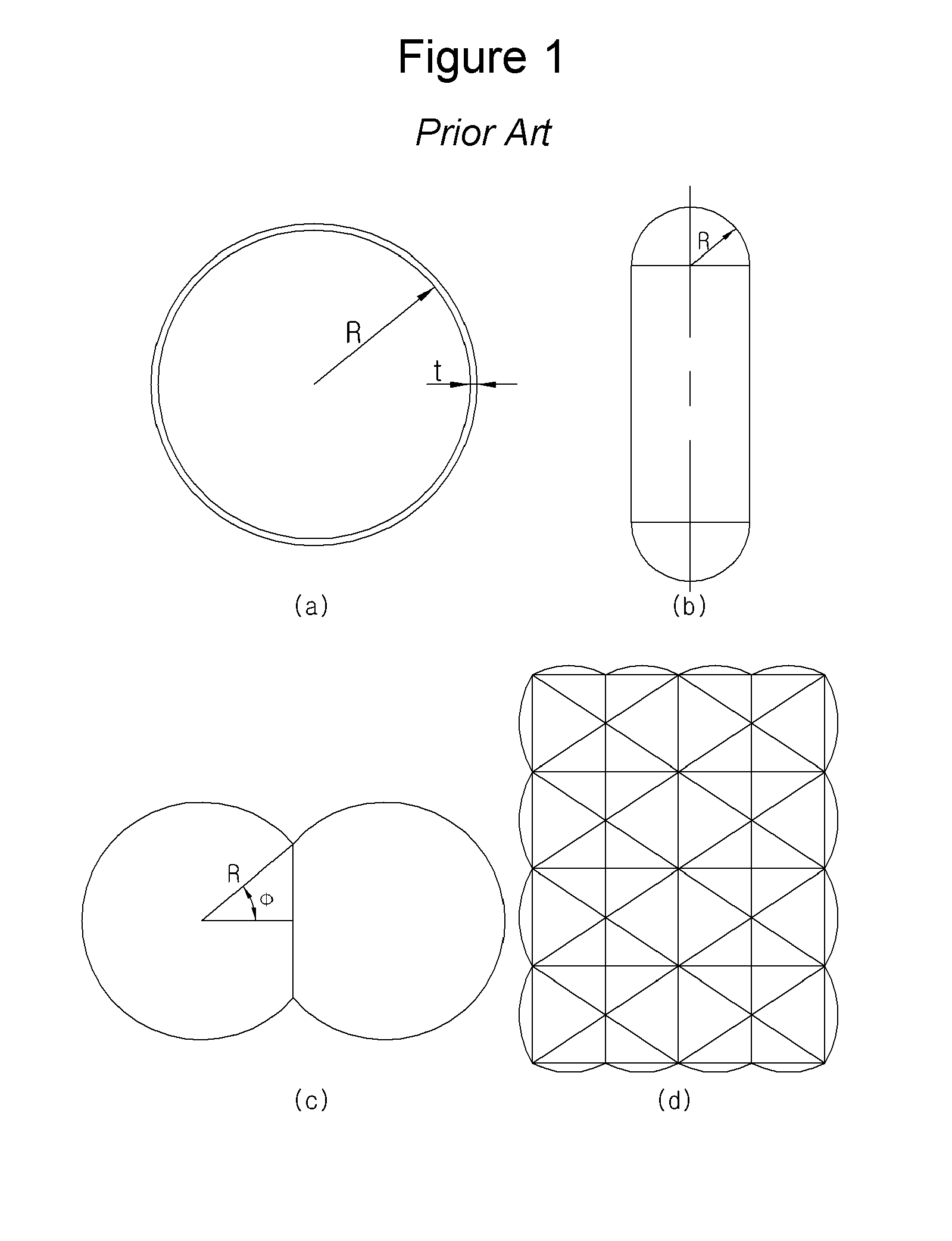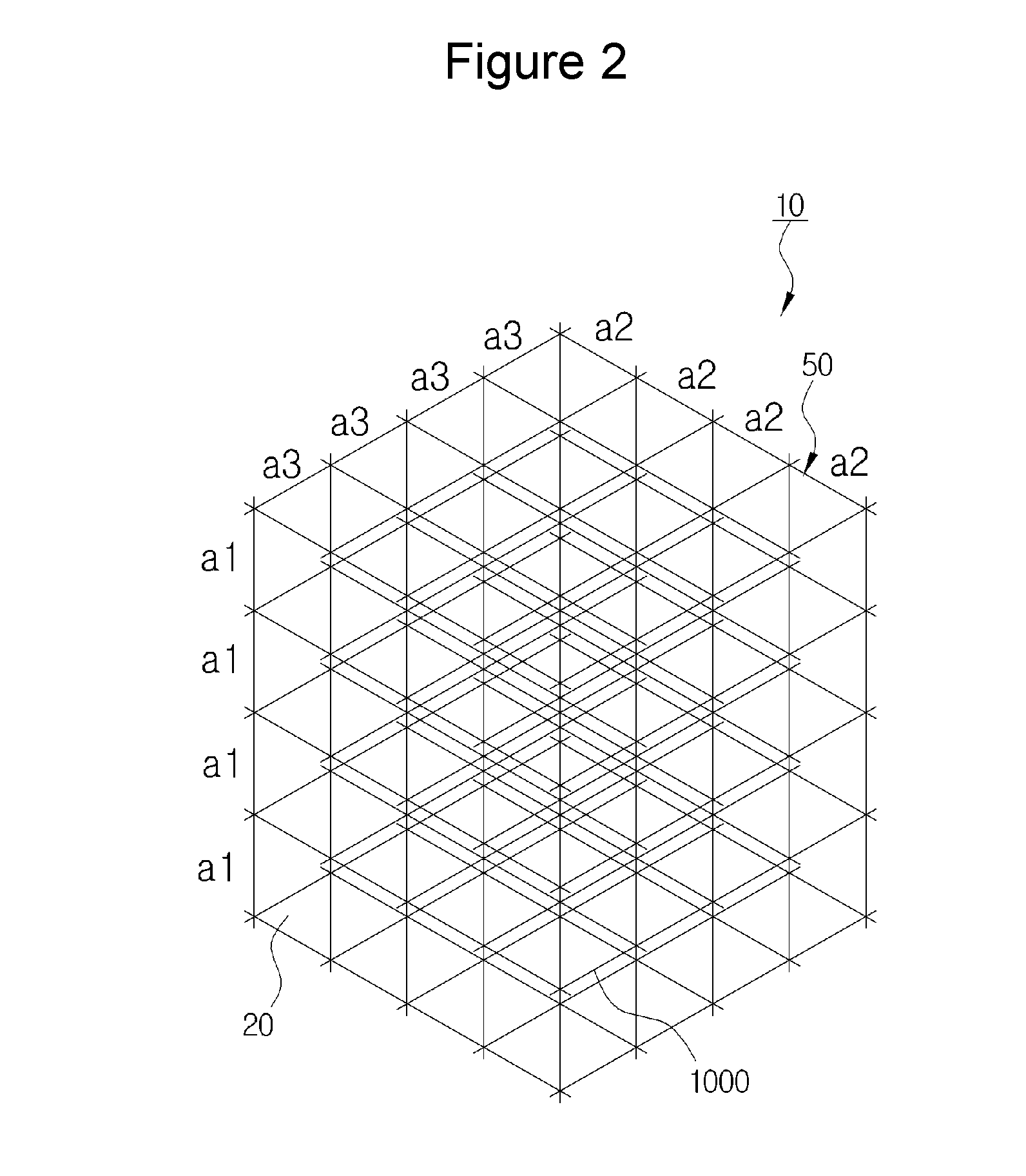Prismatic pressure tank having lattice structure
a pressure tank and lattice technology, applied in the field of pressure tanks, can solve the problems of not being able to meet significant internal pressure, not being able to make very large membrane shells, and more than double the amount of material required, so as to achieve efficient use of surrounding space, high volume efficiency, and the effect of extending the size of the pressure tank
- Summary
- Abstract
- Description
- Claims
- Application Information
AI Technical Summary
Benefits of technology
Problems solved by technology
Method used
Image
Examples
Embodiment Construction
[0075]10: Pressure tank20: Inner wall
[0076]21: wall stiffening member
[0077]22: beam-wall bracket
[0078]23: surface stiffening member
[0079]24: beam-beam bracket
[0080]30: Outer wall
[0081]40: Girder4l: Flange
[0082]50: Tank body
[0083]51: Tank body with corners chamfered straight.
[0084]52: Tank body with corners chamfered curvedly.
[0085]1000: Cell structure having load-carrying internal lattice structure
[0086]100: Surface lattice structure
[0087]110: Surface lattice unit
[0088]114: Intersecting part
[0089]120: Cell wall
[0090]121: First cell wall122: Second cell wall
[0091]123: Third cell wall
[0092]200: Beam structure210: Beam lattice unit
[0093]211: X-axis beam structure212: Y-axis beam structure
[0094]213: Z-axis beam structure214: Intersecting part
[0095]220: Quadrangular beam structure
[0096]230: Circular beam structure
[0097]231: Circular X-axis beam structure
[0098]232: Circular Y-axis beam structure
[0099]233: Circular Z-axis beam structure
[0100]240: Combined beam structure
[0101]241: Combined ...
PUM
 Login to View More
Login to View More Abstract
Description
Claims
Application Information
 Login to View More
Login to View More - R&D
- Intellectual Property
- Life Sciences
- Materials
- Tech Scout
- Unparalleled Data Quality
- Higher Quality Content
- 60% Fewer Hallucinations
Browse by: Latest US Patents, China's latest patents, Technical Efficacy Thesaurus, Application Domain, Technology Topic, Popular Technical Reports.
© 2025 PatSnap. All rights reserved.Legal|Privacy policy|Modern Slavery Act Transparency Statement|Sitemap|About US| Contact US: help@patsnap.com



